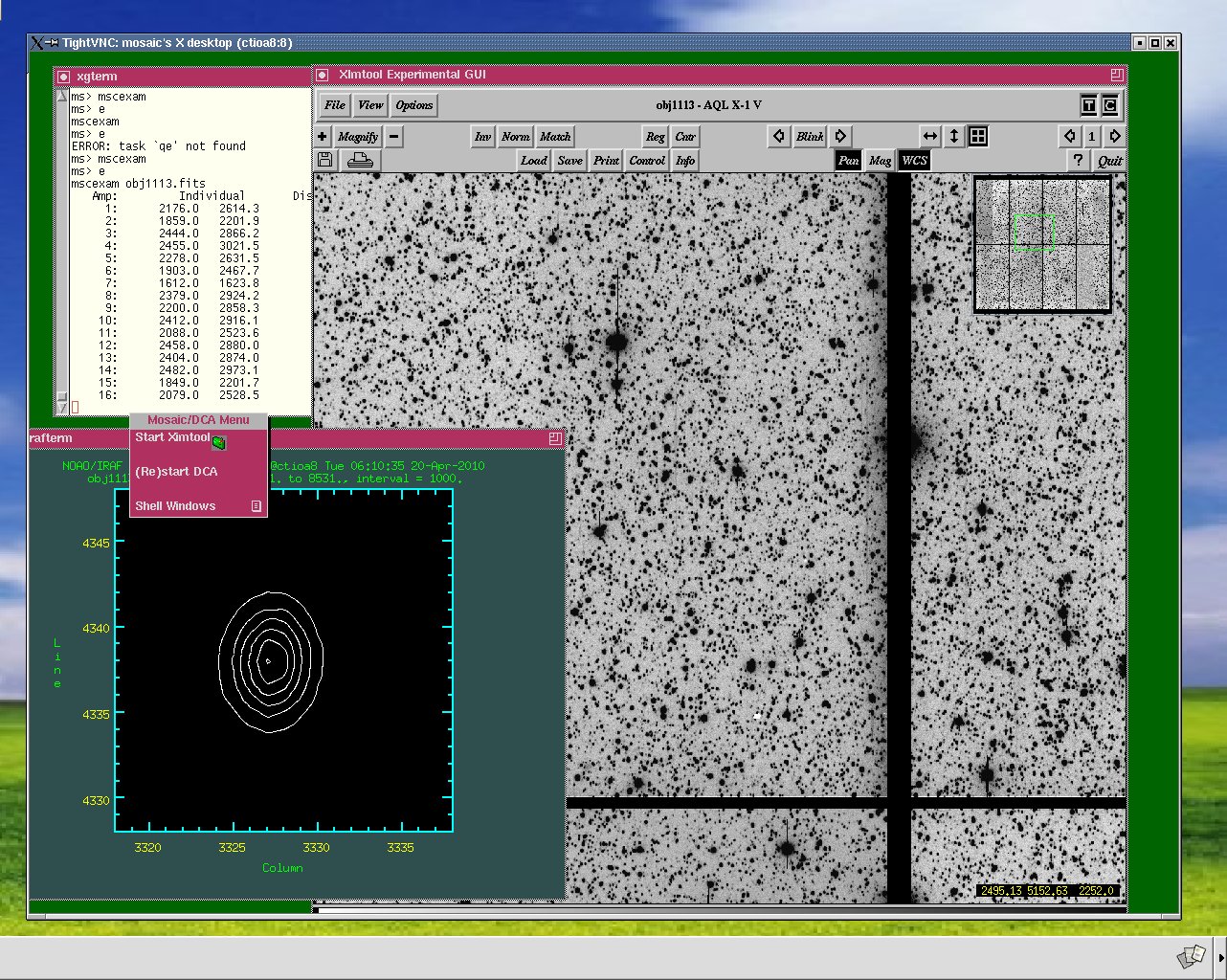Focusing
A Note on focussing the Mosaic camera
Getting best focus with the Mosaic camera can be a tricky business, here's why.
(For basic instructions on measuring and setting focus go here.)
Observations:
- When seeing is 0.9" or better, the focus parabola as measured by mscfocus becomes flat-bottomed (well, actually, it becomes noisy) if a focus step of <=100 units is used. Under these circumstances, mscfocus becomes useless, if not actually dangerous -- it is trying to get best focus by fitting a parabola to noise. Worse, mscexam uses only the focus value with the smallest FWHM and its two nearest neighbours; that is, only three points on the focus parabola are input into the calculation.
- When seeing is worse than this, clean parabolae are generated and mscfocus works just fine (provided that seeing is stable, of course -- if the seeing is varying while the focus sequence is collected, then all bets are off.)
- If seeing is ~0.8" and a focus step of <=100 units is used, it becomes difficult to do "focus by eye" - the focus sequences look pretty much the same over several steps.
- FWHM is better on the left half of the mosaic than the right, and there is a smooth transition between the two. (Best FWHM is to be found near the ends of CCDs 2 and 6, worst in CCD 4). If the seeing is ~0.8", roughly the same distribution of FWHM variation may be seen across several 50 unit focus steps. This distribution is also present in images of worsening seeing, but becomes less pronounced (I see it in images of well over 1" seeing). Most observers don't see it because they don't take the time to collect enough focus stars and play with mscfocus.
- The best seeing I've seen in the last two mosaic observing blocks has been 0.75" (in R).
Conclusions:
- The optical system is limiting the best delivered seeing to 0.75-0.8" in R.
- The variations in FWHM across the field reflect distortions introduced by the telescope & corrector.
- The actual seeing can be better than 0.75-0.8". Under these circumstances, changing the focus across some range of values (of width dependent on actual seeing) will change delivered seeing in an unpredictable manner because you're sampling optical distortions, not seeing, and mscfocus is rendered useless.
- The well-known "W" shape of seeing variation through focus is an artefact of the distortions present in our particular optical system.
- Chris's technique of looking for the roundest images in the focus sequences to find best focus may work well in good seeing, but the correct method would be to fit the wings of the focus parabola for out-of-focus image sizes >~0.8". We don't currently have the resources to implement this.
Therefore we recommend:
- Focus sequences should cover at least 500 focus units, probably more, especially in good seeing.
- When the seeing is better than 0.9", there's a good chance mscfocus is giving you a bad focus value.
Under these circumstances, I can think of three ways to get decent (if not best) focus:
1. focus-by-eye with a large focus step value
2. Chris's roundest-image technique.
Do an "mscexam" and hit "m". If the resulting profile looks North-South elongated like this:
then you must decrease the focus value.
3. Collecting lots of stars in a focus image with ~100 unit steps and aiming at the middle of the flattish/noisy portion of the through-focus FWHM curves.
Page created: 23 March 2004 by Tim Abbott Updated: April 2010 by Andrea KunderUpdated on January 28, 2025, 10:12 am
